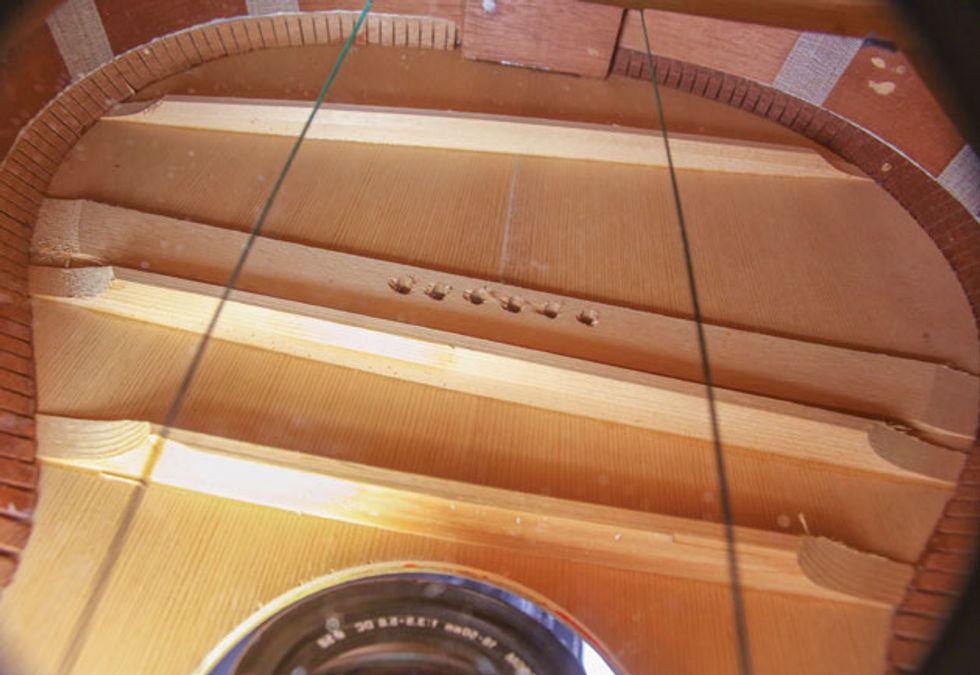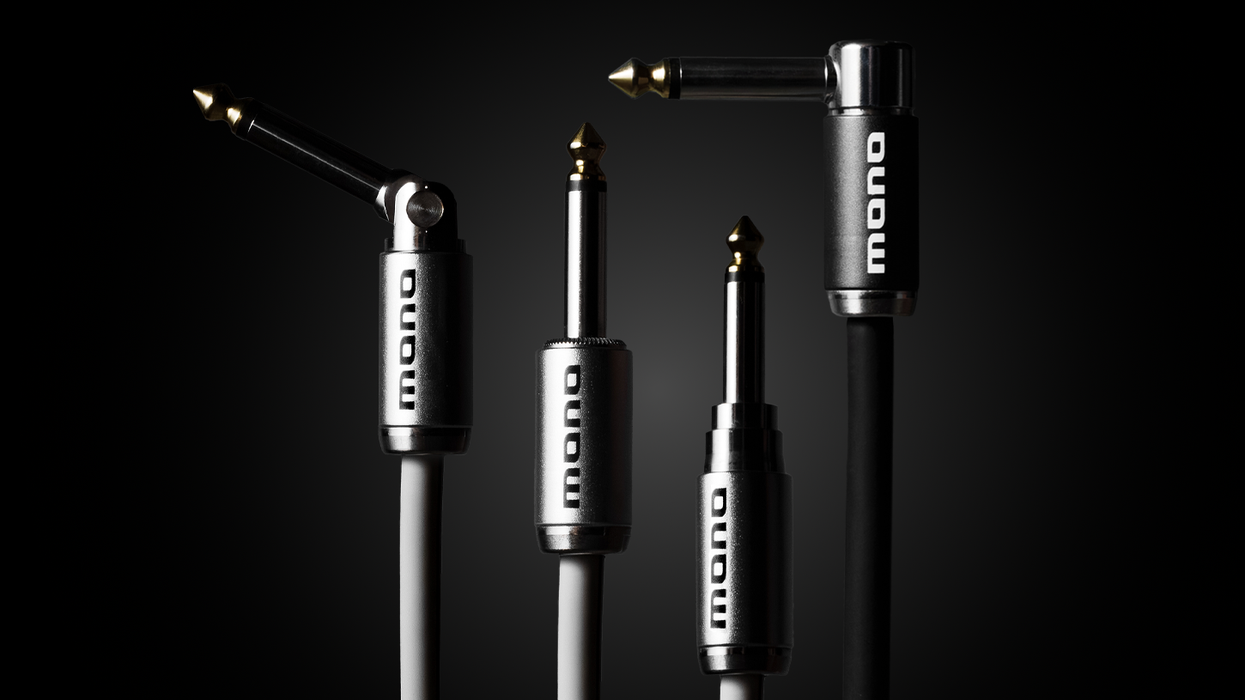If you grabbed a mirror and inspected the top-bracing pattern on every flattop steel-string guitar on the market today—regardless of price range—99 percent of the time you would quickly spot the familar “X” intersection of the two primary braces located just below the soundhole. The soundhole is a weak spot on the top that even a child can recognize, and is cradled between the upper arms of the braces, while the guitar’s bridge is supported by the lower portion of the X.
Academics may argue about who invented it, but there’s no denying that C. F. Martin is responsible for the widespread popularity of X-bracing after first using it for Martin gut-string guitars well before the Civil War. Ironically, the real advantage of X-pattern bracing wasn’t fully realized until steel strings and their oodles of extra tension began to be more widely used on guitars in the early years of the 20th century. But today, as contemporary guitar junkies continue to probe the old boundaries between what’s cool and what’s not, some alternatives to X-bracing are being seen, or at least heard, with less prejudice.
Conventional guitar-gab wisdom has taught us for decades that the soundboard bracing for flattops was easy to summarize: Classical nylon-string guitars had top bracing in a fan pattern, steel-string guitars were X-braced, and any other bracing pattern for steel-string models was probably lousy (or at least inadequate). This last judgment was broadly applied to a wide range of guitars, but especially those constructed with what’s commonly called “ladder-bracing”—so-named because the parallel horizontal braces resemble the rungs of a ladder.
Soundboard ladder-bracing was found on most of the mass-produced flattops from the Kay and Harmony factories in Chicago, including those with headstock trademarks reading Silvertone and Airline. Those Chicago factories—along with other large-scale manufacturers along the East Coast—produced instruments with dozens of different names and logos, but most all had this simple and similar top-bracing pattern in common because it was quick and easy to manufacture. The majority of these ladder-braced guitars, whether made in 1925 or 1955, didn’t sound very impressive when compared to the X-braced models that commanded higher prices.
But what many fail to consider is that the top bracing on those inexpensive guitars wasn’t the only part of the instrument that was made cheaply. It was the sum of several shortcuts added together that took a toll on the sound. For example, when comparing a late-’50s Martin 00-18 to a Kay guitar of the same era, you’re hearing a lot more than the difference between X-bracing and ladder-bracing. You’ll find much more interesting comparisons if you dial it back a couple of decades, when some guitars with ladder-braced tops were well made with woods equal to what was used on their X-braced contemporaries.
When good materials and quality construction were combined on a ladder-braced guitar of significant size, such as the Galiano in Photo 1, the result was a guitar that could more than hold its own versus X-braced instruments. Galiano instruments were made by a number of individual builders in the New York/New Jersey area, and many of those same builders also worked for the Oscar Schmidt Company—the makers of Stella guitars out of Jersey City, New Jersey.
Guitars with the Stella brand are among some of the least-expensive instruments made in North America, but they were of much higher quality in the 1920s and 1930s. The most famous artist associated with Stella guitars was folk and blues legend Lead Belly. Virtually all his recordings were made playing a big, ladder-braced Stella 12-string. And jazz-guitar pioneer Eddie Lang played a Galiano in his younger, pre-Gibson L-5 days.
Around the same time, Gibson was making guitars under several budget-brand names as it fought for higher production and market share among cash-strapped musicians during the Great Depression. Some of Gibson’s Kalamazoo and Recording King models utilized the same woods and body shape as Gibson’s more expensive L-00, and appeared virtually identical. But Gibson wisely reserved its adjustable truss rod only for instruments that read “Gibson” on the headstock and also built many of the budget-brand models with ladder-braced tops. This allows for some interesting comparisons between two very similar Gibson-made guitars with very different bracing patterns.
Made by Gibson for Montgomery Ward circa 1938, this Carson J. Robison guitar is nearly identical to models made with the Kalamazoo and Recording King brands. Most, but not all, were given ladder-braced tops as shown.
Does a Carson J. Robison guitar (Photo 2) made by Gibson sound as good as an X-braced Gibson L-00? Maybe not, but the Carson J. Robison doesn’t sound too shabby and has an interesting tonal character. Gibson continued to use ladder-bracing in its LG-1 and LG-0 models throughout the ’50s and ’60s, and for many years, well-intended luthiers would replace the ladder-bracing in an LG-1 with X-bracing to make it more like Gibson’s LG-2. Guitarists these days are more likely to appreciate the whining trebles of an unmodified LG-1 and put that tone to good use, such as by playing with a slide.
Today, ladder-braced guitars are back. And while it would be foolish to pretend that they’re going to threaten the dominance of X-bracing, they do offer players a different tone through reliable, well-made models. Todd Cambio, through his Fraulini brand of guitars, offers a full line of Stella/Galiano-style instruments in response to the price climb in vintage models. Collings has taken a page from the Gibson playbook and now offers lower-priced, Waterloo-brand versions of their popular Collings C10 models. What these new, ladder-braced guitars reveal is that just like comparisons between bolt-on necks versus dovetail neck joints, or nitrocellulose lacquer versus catalyzed finishes, the choice of bracing pattern is not as important as the workmanship and engineering that goes into the entire guitar.
Yep, ladder-braced guitars do sound distinctly different, but in a world filled with X-braced guitars that often look dissimilar while sounding much the same, a different tone can be a good thing.

















